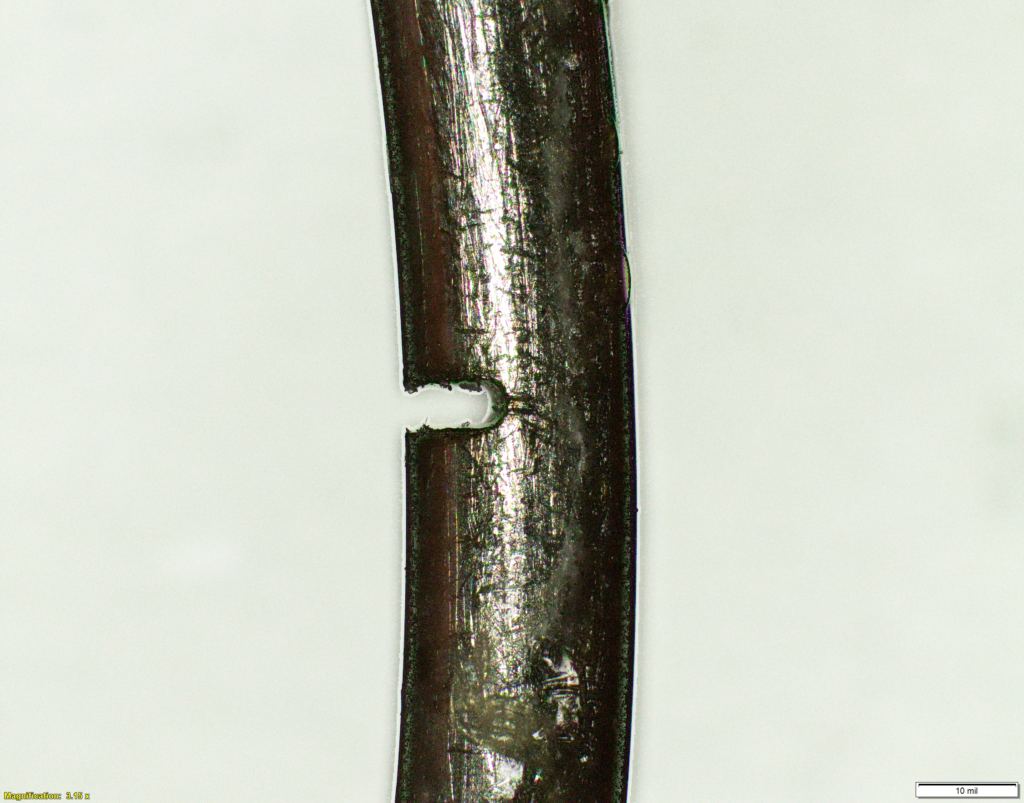When it comes to measuring residual stress in small test specimens, precision is paramount. The slitting method is well suited to this application due to the high accuracy of wire EDM machining. However, this method is not without its challenges, especially when applied to very small test specimens, such as the 0.022-inch diameter wire we recently measured.
Working with a small test specimen presents unique challenges. The delicate nature of the specimen requires meticulous handling to ensure the accuracy and integrity of the measurements. The size of the specimen makes it susceptible to external influences, which can introduce errors or distortions during the testing process. Additionally, there are added complexities when affixing strain gages to a specimen of this size.
Despite the challenges posed by small diameter wires, the slitting method offers a powerful solution for accurate residual stress measurements. By carefully addressing the specific hurdles, engineers can achieve reliable results.
The slitting method’s ability to overcome challenges in measuring small test specimens contributes to advancements in various industries, including aerospace, medical devices, electronics, and more. This technique drives innovation and pushes the boundaries of what is possible in materials testing.
The slitting method is an excellent residual stress measurement technique for small test specimens, enabling engineers to overcome the challenges inherent in such delicate specimens. For more information on the slitting method or any of the other residual stress measurement techniques we offer, please contact us.
